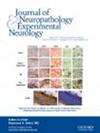SMP30 alleviates cerebral ischemia/reperfusion-induced neuronal injury by inhibiting HDAC4/PSD-95 to preserve mitochondrial function.
IF 3
3区 医学
Q2 CLINICAL NEUROLOGY
引用次数: 0
Abstract
Ischemic stroke is a major cause of global death and permanent disability. Major consequences of ischemic stroke include neuronal mitochondrial dysfunction. We investigated the effects of senescence marker protein 30 (SMP30) on mitochondria-mediated apoptosis and histone deacetylase 4 (HDAC4)/postsynaptic density-95 (PSD-95) signaling in stroke models in vivo and in vitro. Rats with middle cerebral artery occlusion/reperfusion (MCAO/R) were used to simulate cerebral ischemia/reperfusion (I/R) injury. SMP30 was downregulated in the brain tissues of rats after I/R induction. SMP30 overexpression decreased MCAO/R-induced infarct volumes and improved neurologic function and histopathological changes. Increasing SMP30 expression suppressed neuronal apoptosis and reduced mitochondrial dysfunction. SMP30 overexpression in SH-SY5Y and PC12 cells treated with oxygen-glucose deprivation/reoxygenation (OGD/R) decreased HDAC4 and PSD-95 expression; PSD-95 could bind to HDAC4. Furthermore, HDAC4 upregulation abolished the effects of SMP30 overexpression on OGD/R-induced apoptosis and mitochondrial dysfunction in SH-SY5Y cells. Together, these findings indicate that SMP30 alleviates cerebral I/R-induced neuronal injury by inhibiting HDAC4/PSD-95 to preserve mitochondrial function. These interactions might provide new treatment methods for patients with ischemic stroke.SMP30通过抑制HDAC4/PSD-95来保护线粒体功能,从而减轻脑缺血/再灌注诱导的神经元损伤。
缺血性中风是导致全球死亡和永久性残疾的主要原因。缺血性中风的主要后果包括神经元线粒体功能障碍。我们研究了衰老标志蛋白 30(SMP30)对线粒体介导的细胞凋亡和组蛋白去乙酰化酶 4(HDAC4)/突触后密度-95(PSD-95)信号传导的影响。用大脑中动脉闭塞/再灌注(MCAO/R)大鼠模拟脑缺血/再灌注(I/R)损伤。I/R诱导后,SMP30在大鼠脑组织中下调。SMP30过表达可减少MCAO/R诱导的脑梗塞体积,改善神经功能和组织病理学变化。增加 SMP30 的表达可抑制神经元凋亡,减少线粒体功能障碍。在经氧-葡萄糖剥夺/再氧合(OGD/R)处理的 SH-SY5Y 和 PC12 细胞中过表达 SMP30 可减少 HDAC4 和 PSD-95 的表达;PSD-95 可与 HDAC4 结合。此外,HDAC4的上调消除了SMP30过表达对OGD/R诱导的SH-SY5Y细胞凋亡和线粒体功能障碍的影响。这些研究结果表明,SMP30 可通过抑制 HDAC4/PSD-95 来保护线粒体功能,从而减轻脑 I/R 诱导的神经元损伤。这些相互作用可能会为缺血性中风患者提供新的治疗方法。
本文章由计算机程序翻译,如有差异,请以英文原文为准。
求助全文
约1分钟内获得全文
求助全文
来源期刊
CiteScore
5.40
自引率
6.20%
发文量
118
审稿时长
6-12 weeks
期刊介绍:
Journal of Neuropathology & Experimental Neurology is the official journal of the American Association of Neuropathologists, Inc. (AANP). The journal publishes peer-reviewed studies on neuropathology and experimental neuroscience, book reviews, letters, and Association news, covering a broad spectrum of fields in basic neuroscience with an emphasis on human neurological diseases. It is written by and for neuropathologists, neurologists, neurosurgeons, pathologists, psychiatrists, and basic neuroscientists from around the world. Publication has been continuous since 1942.

 求助内容:
求助内容: 应助结果提醒方式:
应助结果提醒方式:


